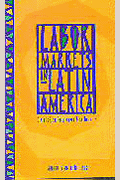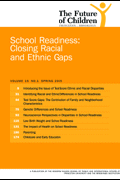Studies in this week’s Hutchins Roundup find that preschool attendance pays off in high school and college years, returns to homeownership vary by race in because of geography, and more.
Want to receive the Hutchins Roundup as an email? Sign up here to get it in your inbox every Thursday.
Attending preschool improves outcomes in high school and college years
In a long-term study of students attending public preschool in Boston, Guthrie Gray-Lobe of the University of Chicago, Parag A. Pathak of MIT and Christopher Walters of UC Berkeley find that preschool enrollment significantly improves high school and college educational outcomes. By comparing students who were randomly assigned in or out of preschool through a lottery, the authors find that preschool enrollment increases the probability of graduating high school by 6 percentage points and of SAT test-taking by 9 percentage points. Preschool attendance also reduces the frequency of suspensions and juvenile incarceration. Further, children who won a preschool seat were 5.4 percentage points more likely to attend college, and 8 percentage points more likely to enroll directly following high school graduation. The authors also find early evidence of positive effects of preschool on college graduation. The positive effects tended to be greater for boys than for girls. These findings “illustrate the potential for a universal preschool program to improve educational attainment for a disadvantaged student population,” the authors say.
Geographic variation in racial composition leads to unequal rates of return on housing across races
Returns to investing in housing vary geographically, as cities with limited supply of housing, growing tech industries and desirable amenities grow increasingly expensive. Using Federal Housing Administration loan records and housing price data from Zillow, Matthew Kahn of Johns Hopkins finds that geographic variation in the racial and ethnic composition of home buyers leads to differences across racial groups in the rate of return on investment in housing. Black homebuyers, who are less likely to locate in cities with rising home prices, received lower rates of return on home purchases between 2007 and 2020, while Asian homebuyers received the highest returns. Within geographic areas, differences in returns across racial groups were much smaller. Housing location is driven by differences in demand by group—including racial differences in employment across industries like tech, preexisting concentrations of racial or ethnic groups, and in ability to afford expensive housing in cities with tight supply. These results suggest that geographic variation in residential location contributes to wealth inequality across racial groups.
Fed’s Paycheck Protection Program Lending Facility caused an increase in PPP lending by banks
After Congress created the Paycheck Protection Program (PPP) to make loans guaranteed by the Small Business Administration to businesses during the pandemic, the Federal Reserve opened the PPP Lending Facility (PPPLF) to provide participating banks with funding for PPP loans. Sriya Anbil, Mark Carlson, and Mary-Frances Styczynski of the Federal Reserve Board find that banks that tapped the PPPLF made almost two times as many PPP loans as those that did not use the Fed facility. The authors show that the banks that were most likely to use the PPPLF were those that had previous experience using the Fed’s discount window, which suggests that the difference in lending was because of the facility, rather than differences in demand for loans across banks. The effect of the PPPLF was observed for both large and small banks, but for large banks it was primarily due to the presence of the PPPLF as a backstop. Filing for PPPLF eligibility increased their lending; actual use of the PPPLF had a smaller impact.
Chart of the week: CPI, excluding food and energy prices, jumps 3% from April 2020
12–Month Percentage Change in Consumer Price Index, All Items Less Food and Energy
Source: Bureau of Labor Statistics
Quote of the week:
“Labor supply is one of the confounding aspects of this recovery. As the employment data show, firms have been able to increase their hiring. But we are receiving widespread reports from business contacts across sectors that they are having a hard time finding the workers they need. The question is why, given that the unemployment rate is still so high and a number of indicators point to continued slack in the labor market,” says Loretta Mester, President of the Cleveland Fed.
“I believe the answer reflects the unusual nature of the pandemic shock that hit the economy. It is likely that some people with the financial means to do so have been cautious about returning to the workforce because of concerns for their health in the midst of the pandemic. Some others have had to withdraw from the workforce to take care of loved ones afflicted by the virus or to tend to children when childcare facilities closed and schools shifted to on-line teaching. Childcare responsibilities fall disproportionately on women and their labor force participation rates fell more sharply during the pandemic than those of men. The fiscal support likely meant that more people had the financial cushion to remain out of the workforce for these or other reasons. That support may also have shifted some bargaining power over wages to workers after decades of decline. Although the aggregate statistics do not show much acceleration in wages, our contacts say that they are beginning to respond to labor shortages by increasing their wage offers and by considering candidates they may have previously passed over because of minor criminal offenses or other reasons.
As the public health situation continues to improve over the course of the year, I expect that the factors weighing on labor supply will diminish and that there will be strong job gains, with the unemployment rate falling to 4.5% or less by the end of the year.”
The Brookings Institution is committed to quality, independence, and impact.
We are supported by a diverse array of funders. In line with our values and policies, each Brookings publication represents the sole views of its author(s).











Commentary
Hutchins Roundup: Preschool, homeownership, and more
May 13, 2021